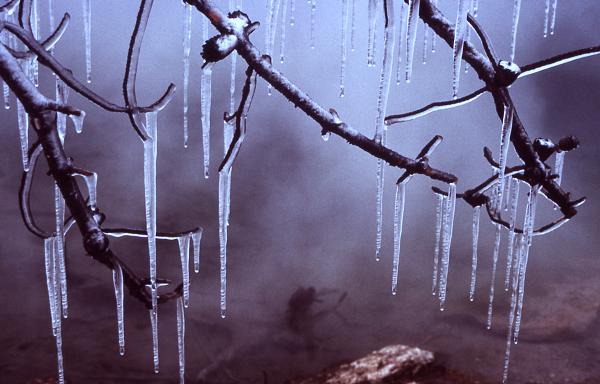Advanced methods of rapid freezing combined with sophisticated methods of electron microscopy allow physicists to create ice layers in the laboratory under cold conditions, similar to those prevailing in outer space, and to observe their detailed molecular organization, while receiving clues to essential questions regarding the origin of life.

The universe is full of water, mainly in the form of extremely cold ice layers found in the interstellar dust particles. However, until recently there was no detailed knowledge of the exact structure of these tiny particles. Now, advanced methods of rapid freezing combined with sophisticated methods of electron microscopy allow physicists to create ice layers in the laboratory under cold conditions, similar to those prevailing in outer space, and to observe their detailed molecular organization, while receiving clues to essential questions regarding the origin of life.
Researchers were surprised by some of the findings, and not least - by the wonderful characteristics of some of the images obtained, according to Julyan Cartwright, an expert in ice structures from the Andalusian Institute of Earth Sciences (IACT) at the University of Granada in Spain.
Recent discoveries regarding the structure of ice layers under the conditions of outer space were recently discussed at a scientific workshop organized by the European Science Foundation. Many of the discoveries regarding ice structures at low temperatures were possible following previous research that discussed industrial applications related to the deposition of thin layers on various materials (such as rock) including the production of ceramic and semi-conductor materials. Further research on ice layers will surely lead to new insights that will be very valuable in such industrial applications.
However, the European workshop mainly focused on the ice found in space, which is usually formed at temperatures lower than even the coldest places on Earth - between 3 and 90 degrees above absolute zero (3-90K) - which are between minus 270 and minus 184 degrees Celsius. Most of the ice accumulates on dust grains, because there are so many of them, but some of it is also found on larger bodies such as asteroids, comets, moons or cold planets and sometimes also those capable of sustaining life, such as the Earth.
At very low temperatures, ice is able to exist in completely different structures than those that exist under normal conditions. In some cases it can be amorphous (lacking an orderly shape), similar to glass, and in this form the water particles are "frozen" in space and do not arrange themselves as a crystal known to us as an ice cube. In order to obtain this amorphous form, the water must be cooled to its glass transition temperature - minus 143 degrees Celsius - without the previous formation of ice crystals in the process. In order to obtain this structure in the laboratory, rapid cooling is necessary, which the researchers achieved during their work with a "cooling finger" of helium that was integrated into a scanning electron microscope while obtaining the appropriate images.
The researchers saw that ice is able to exist in both amorphous and crystalline structures, that is - a mixture of order and disorder, while accepting a variety of interesting possibilities. Under certain conditions, the ice is formed in biomimetic structures - life-mimicking, that is - they exist in forms that appear in nature with structures of palm fronds, worms and even bacteria. This fact led the chief researcher to point out that researchers must not assume that the existence of forms that exist in nature and appear on objects originating in space, such as rocks from Mars, is a fact that life did indeed exist there in the past. On the other hand, the existence of nature-like forms appearing in ice indicates that nature does have uniform physics. Although ice is too cold to support life as we know it, it may have once provided a suitable internal environment for the growth of pre-biological life.
"It goes without saying that biology uses physics," says the researcher. "Could you not do that? Therefore we should not be surprised to see that sometimes biological structures clearly use physical principles. So, if we look back in time, it is likely that when life first appeared it used a type of enclosure that was much simpler than today's biological cell, most likely some type of simple bubble like that of soap bubbles. This type of bubble is currently found in abiotic systems (non-living, abiotic), both in warm conditions such as the bottom of the oceans and in cold conditions of frozen seas."
This is an interesting idea that will be further tested in future ventures. It may provide a new twist to the idea that life came from space. It is possible that the pre-life forms did come from space, but the carbon-based biochemistry that underlies all life forms on Earth developed precisely here.
Knowing the news about the study
In the same topic on the science website:

3 תגובות
In the end we will find out that the extraterrestrials are actually creative...
And we won't be able to talk to them because they will melt.
And then a war will break out because we eat popsicles....
What a mess… 🙂
This DNA bastard…
That is, the DNA learned and imitated the laws of freezing.